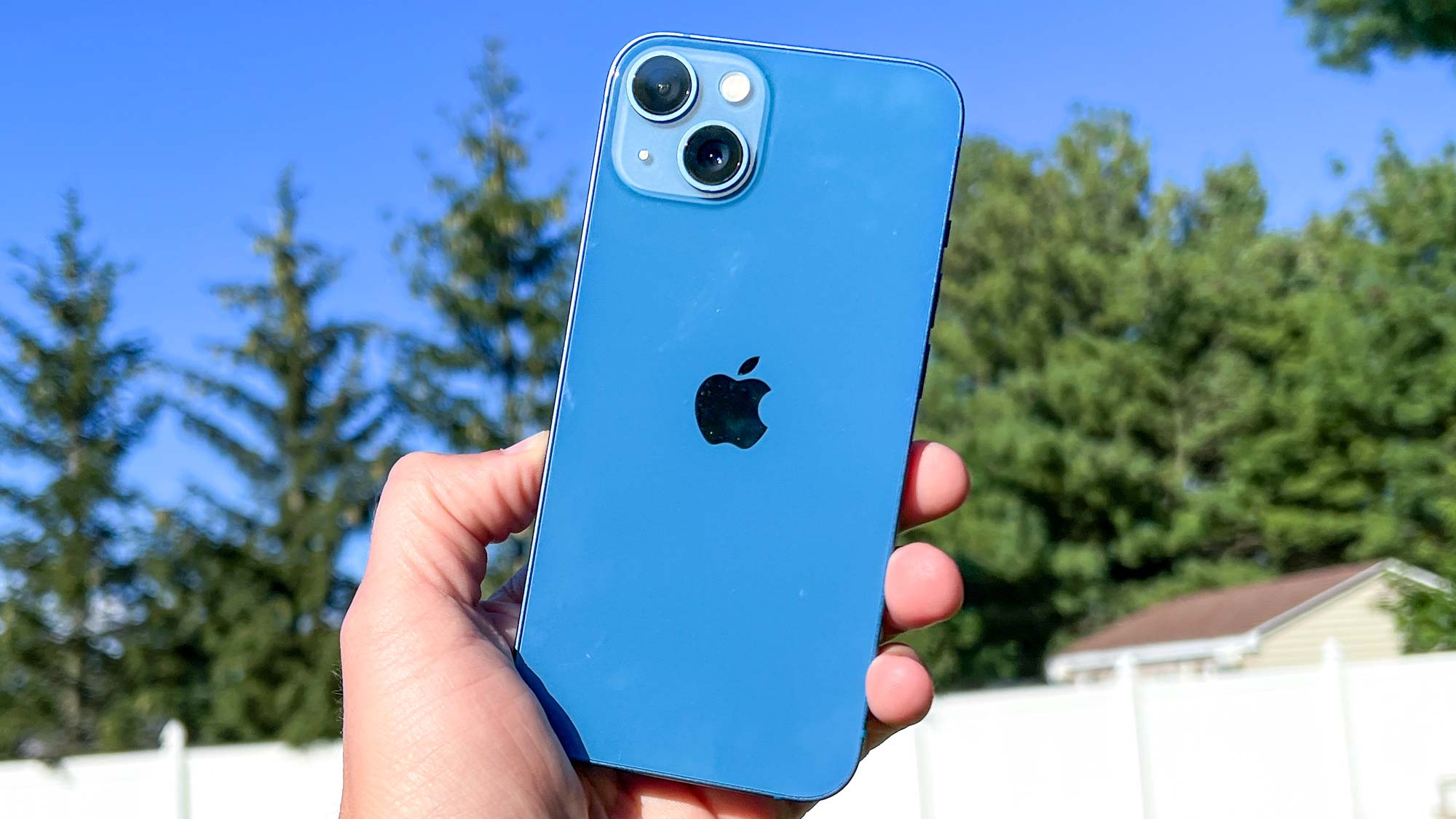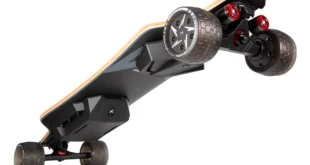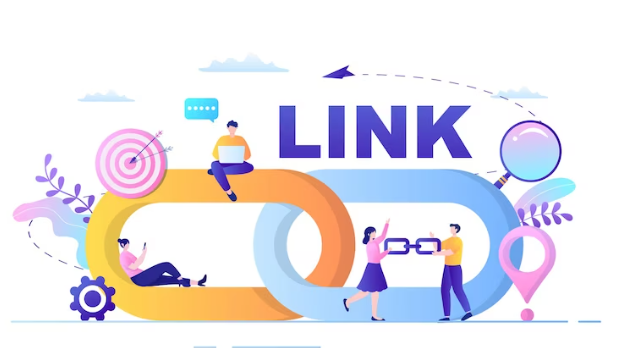Introduction
The iPhone 14 might be here, but with minimal upgrades for Apple’s latest smartphone, there’s still plenty of life in the iPhone 13 yet.
Unlike the iPhone 13 Pro models, which Apple discontinued with the launch of the iPhone 14 Pro, it still sells the iPhone 13 alongside the newer 14 series. It’s picked up a small price cut in certain regions, and can often be found even cheaper on big deals days and during sales.
It also now runs iOS 16 and should continue to receive software updates for many years to come.
Design and screen
- A 20% smaller notch
- Brighter OLED display
- Same IP68 rating and Ceramic Shield as the iPhone 12
Apple went big with the iPhone 12 redesign, ridding the curved sides of older models, and giving the new device a refresh that harked back to the iconic iPhone 4 and 5. It was a welcome change, especially after years of the curved iPhone 6 look.
With such a significant change to the iPhone’s exterior happening recently, this update was always going to be iterative. Apple has made some design changes, but they’re all fairly minor.
The notch is 20% smaller, which is welcome but still more annoying than most of the Android competition that have switched to hole-punch style cutouts for the front cameras. On the iPhone 13 Mini, the smaller notch is most welcome; but here it doesn’t have much of an impact. It would have been good to use that extra space to display the battery percentage, for instance.
The iPhone 13 is also slightly heavier and thicker, to account for the bigger battery and upgraded camera module. Unless you hold the iPhone 12 and iPhone 13 next to each other, however, you’re unlikely to notice this difference. The larger camera bump does mean that the device won’t fit into older cases, though, which might prove annoying to some but is hardly a surprise. It’s very similar to the iPhone 14 though, in terms of size,
Weight
Size (Dimensions)
iPhone 13
173 G
71.5 x 7.65 x 146.7 MM
iPhone 13 Mini
140 G
64.2 x 7.65 x 131.5 MM
iPhone 14
172 G
71.5 x 7.8 x 146.7 MM
Apple introduced a couple of new colour options for the iPhone 13. Starlight adds a hint of gold to a silver body, while the Product(RED) model you’ll see pictured is a deeper shade than before; it really is quite striking.
Midnight is a very dark blue that looks almost black, plus there are blue and light pink options, too. This isn’t quite the standout selection of colours we’ve seen in recent years; I’m disappointed that there’s no pale green and purple option – both of which I really liked on the iPhone 12.
The upgrades that Apple added with the iPhone 12 remain, including Ceramic Shield and the IP68 water-resistance rating. I used an iPhone 12 for an entire year, and despite a few drops and no screen protector fitted, the phone still looks in good condition. There are a few micro-scratches on the display – obviously, fitting a screen protector would have alleviated such issues – but they aren’t too bad. I’d hope it would be a similar case this time around.
It’s the iPhone 13 Pro model that gets all the big-screen upgrades this time around, and it’s a shame the iPhone 13 sticks with the standard 60Hz panel – although it is a very good 60Hz panel.
ProMotion, which adds an adaptive refresh rate that can ramp up to 120Hz and down to 10Hz, is one of the headline additions to both Pro models – and I have to say it’s my favourite iPhone upgrade in years.
A faster display isn’t really something you wish for when you haven’t already experienced it, but once you have, it’s hard to switch back to a 60Hz panel. Scrolling, swiping and gaming all feel super-smooth; it just makes animations and movements so much faster. Judging by Apple’s past releases, we’ll see ProMotion on this series eventually – although it might end up being the iPhone 15, as it still is not on the iPhone 14.
Still, the iPhone 13 features a great OLED display. The smaller notch is welcome when watching videos, while the extra hit of brightness (an 800 nits max in general activities and 1100 in HDR video) is of slight benefit when reading messages or viewing Google Maps directions on sunny days. It isn’t a reason to upgrade, however.
Apple’s screens tend to be some of the more neutral around, reigning in the overly saturated look of Samsung’s panels. Colours are vibrant and immersive, without feeling lurid. An episode of the visually stunning Our Planet on Netflix showed this off perfectly, with fantastic contrast and accurate colours.
You don’t have any control over the screen, though. Don’t expect to find multiple presets available if your preference is for a cooler, or warmer, panel.
Camera
- A duo of new 12MP sensors
- New diagonal orientation
- Focus on video with a new Cinematic mode
The biggest spec upgrade for the iPhone 13 comes by way of the duo of cameras on the back. The new cameras here – wide and ultra wide – are pretty much identical to what you’ll find on the iPhone 12 Pro Max, minus the optical zoom of course. This is great considering that was one of the best camera phones around.
The main wide camera remains at 12 megapixel, with an f/1.6 lens, while the 12-megapixel ultra wide has a slower f/2.4 lens and a 120-degree field of view.
This is impressive stuff, especially when you consider last year’s smaller Pro model didn’t even have this camera. It makes this a sizeable upgrade over the iPhone 12.
The camera sensors themselves are much larger (1.7µm on the iPhone 13 vs 1.4µm on the iPhone 12) to allow in more light. The main wide sensor now has in-body stabilisation, too, which Apple calls Sensor Shift stabilisation. Both of these upgrades help significantly in low-light situations – the pictures I snapped when the lighting was less than stellar were similar to those taken with the 12 Pro Max.
Shooting at night, in darker bars and restaurants, is a real highlight. The iPhone 13 tends to force itself into the dedicated Night mode more often than the iPhone 13 Pro, but the results are supremely detailed with natural bright points and minimal noise.
Daylight photos taken with the previous model were decent, and it’s hard to tell the difference between landscape shots taken with the iPhone 12 and the 13, or even the iPhone 14 for that matter.
However, if you’re coming from an even older iPhone then the difference is far greater, with punchier colours and sharper details apparent. That bigger wide sensor also helps with a more natural bokeh effect (the soft blur that surrounds an object when you get up-close), which is always welcome. If you want a stronger, more customisable blur then the dedicated Portrait mode is excellent.
Apple is giving you a little more control over the look of your snaps this time around with a new software feature called Photography Styles. The Vibrant style, for instance, boosts colours and saturation, very much in the vein of a Galaxy S-series flagship.
The High Contrast option ups the dynamic range, producing far more striking results that aren’t too dissimilar to those from a Google Pixel. Finally, there’s Warm and Cool, both of which do pretty much what they say on the tin.
It’s important to not view these options simply as filters, since they’re more than that. They directly alter the pipeline of the image, meaning you can’t flick between styles or remove them after you’ve taken the photo.
Cinematic mode got a lot of screen time during the device’s reveal and it isn’t hard to see why. It’s almost a Portrait mode for video, but it takes this idea further by adding in focus racking, allowing the camera to switch focus points – for example – if a face turns away.
The blur effect is far from perfect, but it’s much better than attempts made by the Android competition; plus, the focus racking works very well. I lined up a number of objects, with the camera changing focus smoothly as I moved them away. It worked well with faces, too.
You can record Cinematic mode in HDR Dolby Vision up to 1080p at 30fps, far lower than the 4K 60fps maximum in the standard video modes.
I wouldn’t call Cinematic mode a gimmick. It works well and I’m sure that, like Portrait mode before it, it will get better over time. I just can’t see who would use it consistently, especially since the formats and the ability to edit focus points is restricted to Apple’s own software.
Where I’d have liked to see some greater upgrades to the camera is around the front. The 12-megapixel selfie camera has remained the same for generations now, and it could really do with a little more attention. Selfies are flat and lack the nuance of snaps taken by the rear cameras.
Performance
- A15 Bionic powers the phone
- Wider 5G band support
- 4GB RAM, 128GB base storage
Apple’s silicon is now past the point where it’s valid to say a new chip makes the phone feel faster. iPhones have felt fast for years now, and the advancements to the A15 are far beyond upping some benchmark scores or making web pages load faster.
The A15 Bionic powers the Cinematic mode with its focus racking and constantly changing blur effects. It also powers stuff like the ridiculously useful Live Text feature, which can pull addresses and phone numbers from your photo library.
Inside the chip is a six-core CPU, four-core GPU and a 16-core neural engine for AI tasks. Interestingly, Apple has kitted out the Pro models with a five-core GPU – although I didn’t notice any real differences through testing. The A15 Bionic is paired with 4GB of RAM, which is identical to the iPhone 13 and 2GB less than the Pro models.
The iPhone 13 is fast in all tasks you throw at it. I’ve tried countless Apple Arcade titles and they all run without a hitch, while apps open instantly. While I’d expect such performance on a far cheaper phone than this, it’s still worth noting.
There’s a wider selection of 5G bands this year thanks to a new 5G modem. If you’re in the USA then the iPhone 13 also supports mmWave 5G – a faster version of the tech that only really works when you’re very close to the masts. mmWave isn’t a thing in the UK, nor many other regions yet, so the tech is simply just missing from these iPhone models.
One very welcome change is the jump up to 128GB for the base model, doubling the previous 64GB model. There’s also 256GB (the one I’d recommend) and a 512GB option.
Battery life
- Much better battery life than the iPhone 12
- Doesn’t come with a charging plug
- Can charge wired at 20w or wirelessly through MagSafe at 15w
Battery life has seen one of the biggest upgrades in the iPhone 13, and it’s been achieved through the inclusion of larger cells and a more efficient chipset.
Apple claims an extra two hours of video playback, and while this is something of a pointless metric unless you really do just stream video all day, I’ve found it does equate to a couple of extra hours of use before a charge is needed.
Throughout testing, I’ve been trying to deplete the phone’s battery in a day. I ran a looped video that took 21 hours for the battery to die (more than Apple’s claimed 19 hours) while streamed video lasted for 15 hours. An hour of Netflix streaming in HDR at 100% brightness consumed 9% (7%, with a more reasonable 75% brightness), while an hour of playing Sayonara Wild Hearts only took off 11%.
I’m not going to say this is the best battery life I have seen on a phone, but it’s certainly far better than the battery life I experienced with the iPhone 12.
For charging, you’ll still need to provide your own plug (although a cable is included in the very slim box), or pick up either a MagSafe charger or another Qi-enabled pad.
Apple might have switched to USB-C across its laptops and the majority of iPads, but it still uses Lightning for the iPhone. If you have plenty of iPhone accessories lying around then this is great; but USB-C is just so much faster for both data transfer and charging that it does feel like a miss.
Charging speeds will likely depend on the type of charger you’re using. All iPhone 13 models support up to 20W fast wired charging, and using this you’ll get to around 50% in half an hour.
If you are a writer then you can write for us
 Lifeyet News Lifeyet News
Lifeyet News Lifeyet News





